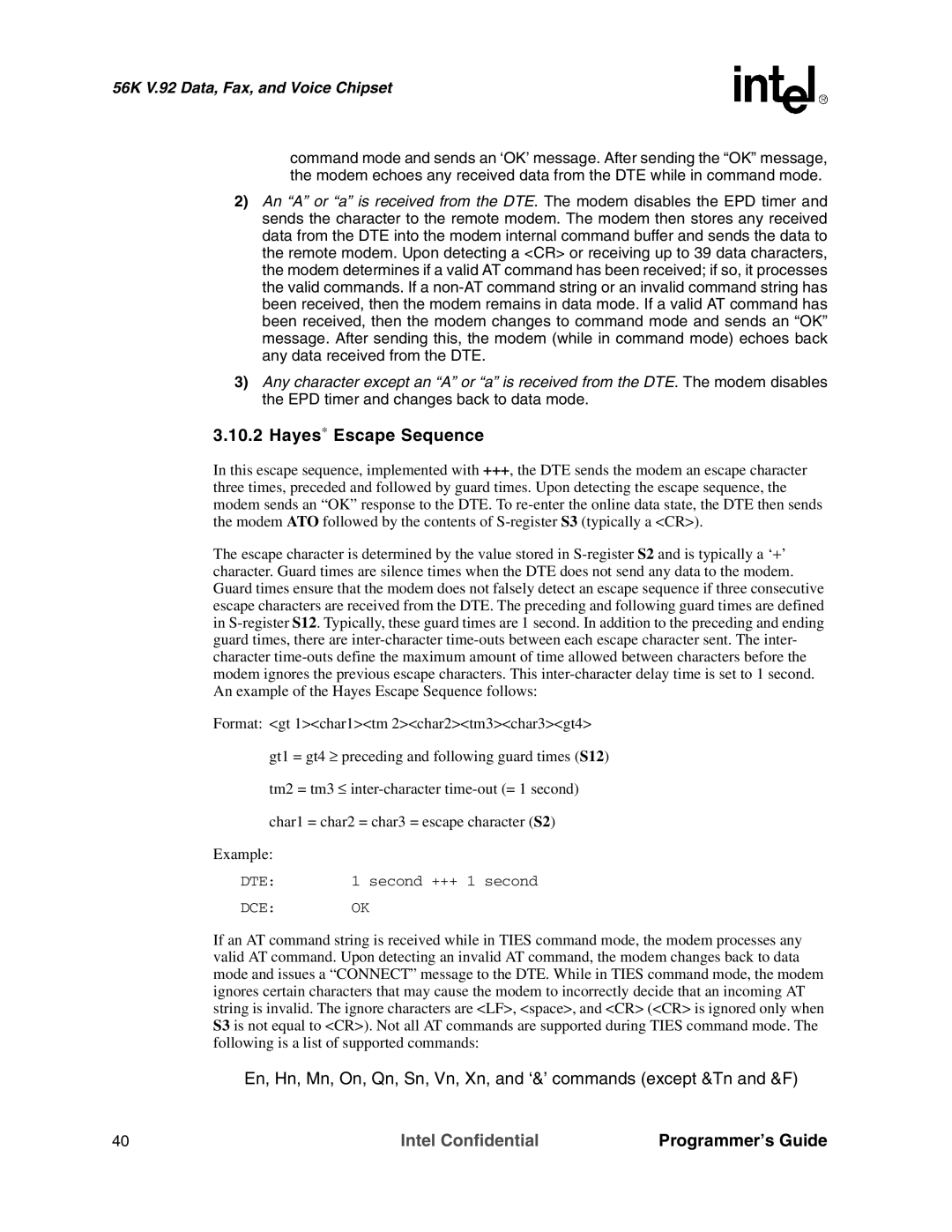56K V.92 Data, Fax, and Voice Chipset
command mode and sends an ‘OK’ message. After sending the “OK” message, the modem echoes any received data from the DTE while in command mode.
2)An “A” or “a” is received from the DTE. The modem disables the EPD timer and sends the character to the remote modem. The modem then stores any received data from the DTE into the modem internal command buffer and sends the data to the remote modem. Upon detecting a <CR> or receiving up to 39 data characters, the modem determines if a valid AT command has been received; if so, it processes the valid commands. If a
3)Any character except an “A” or “a” is received from the DTE. The modem disables the EPD timer and changes back to data mode.
3.10.2 Hayes∗ Escape Sequence
In this escape sequence, implemented with +++, the DTE sends the modem an escape character three times, preceded and followed by guard times. Upon detecting the escape sequence, the modem sends an “OK” response to the DTE. To
The escape character is determined by the value stored in
Format: <gt 1><char1><tm 2><char2><tm3><char3><gt4>
gt1 = gt4 ≥ preceding and following guard times (S12)
tm2 = tm3 ≤
char1 = char2 = char3 = escape character (S2)
Example:
DTE: | 1 second +++ 1 second |
DCE: OK
If an AT command string is received while in TIES command mode, the modem processes any valid AT command. Upon detecting an invalid AT command, the modem changes back to data mode and issues a “CONNECT” message to the DTE. While in TIES command mode, the modem ignores certain characters that may cause the modem to incorrectly decide that an incoming AT string is invalid. The ignore characters are <LF>, <space>, and <CR> (<CR> is ignored only when S3 is not equal to <CR>). Not all AT commands are supported during TIES command mode. The following is a list of supported commands:
En, Hn, Mn, On, Qn, Sn, Vn, Xn, and ‘&’ commands (except &Tn and &F)
40 | Intel Confidential | Programmer’s Guide |
